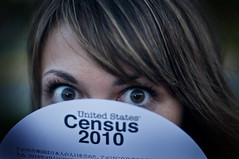 The New York Times reports that the number of foreign-born workers is on the rise in the U.S.
The New York Times reports that the number of foreign-born workers is on the rise in the U.S.
Nearly one in six American workers is foreign-born, the highest proportion since the 1920s, according to a census analysis released Monday.
Because of government barriers to immigration, the share of foreign-born workers dipped from a 20th-century high of 21 percent in 1910 to barely 5 percent in 1970, but has been rising since then, to the current 16 percent.
In 2007, immigrants accounted for more than one in four workers in California (35 percent), New York (27 percent), New Jersey (26 percent) and Nevada (25 percent).
But that’s not all the Census Bureau found:
For the first time, the Census Bureau also compared immigrants by generation. Generally, income and other measures of achievement rose from one generation to the next, although educational attainment peaked with the second generation.
Monica Boyd, a sociology professor at the University of Toronto, said the second generation personified “the overachievement model, a tendency for very high achievement that seems to come as a result of immigrant parents’ instilling in these kids an enormous drive.” Professor Boyd added, “Many try to instill in their kids the phrase, ‘We did this all for you.’ ”
Among all immigrant families, median income rose from $50,867 in the first generation to $63,359 and $65,144 in the second and third, respectively. The only group to register any decrease was family households headed by single mothers; their income declined from the second generation to the third.
Similarly, the overall proportion of immigrant families living below the government’s official poverty level declined, from 16.5 percent to 14.5 to 11.5 among three generations. But among adult immigrants, the proportion who are poor grew again between the second and third generations.
However, while overall measures of income seem to be improving from one generation to the next (with some variation among sub-goups), those for overall educational achievement tell a different story:
While the proportion of high school graduates increased from one generation to the next, the share who had bachelor’s degrees or more higher education declined from the second to the third generations. The proportion with doctorates peaked with the first generation.
Elizabeth Grieco, chief of the Census Bureau’s immigration statistics staff, said the figures suggested substantial progress from the first generation to the second.
“This really shows that immigrants integrate over time the same way they always have,” Ms. Grieco said.
In terms of education, she said, “the third generation seems to be stopping at bachelor’s or master’s degrees.”
So, what do sociologists make of this decline in educational attainment between second and third generations?
Nancy Foner, a sociology professor at Hunter College of the City University of New York, said, “If there is some evidence of third-generation decline, then this no doubt has a lot to do with persistent inequalities and disadvantages facing many of the second generation and their children.”
Professor Foner added that “the economic declines of the past few years no doubt play a role” and that “it could also be that second-generation parents, themselves born in the U.S., are less optimistic and push their children less hard than their own immigrant parents who came here and struggled so their children could succeed.”

 The
The  A recent
A recent 




